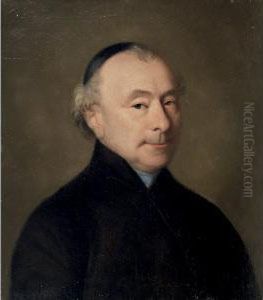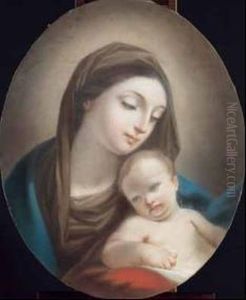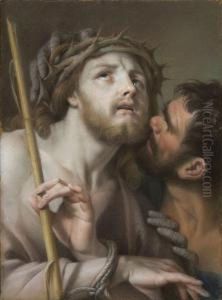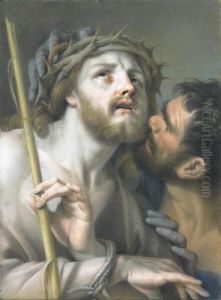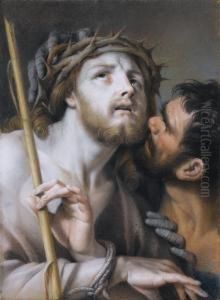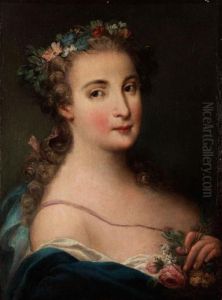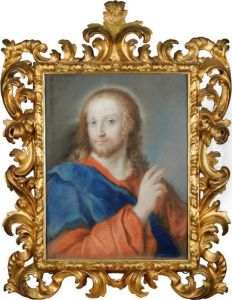Francesco Pavona De Udine Paintings
Francesco Pavona, also known as Francesco Pavona de Udine, was an Italian painter born in 1696 in Udine, a city in the northeastern region of Italy. His work primarily falls into the period of the late Baroque and early Rococo, showcasing a transition in the artistic styles of the era. Pavona's contributions to art are often characterized by his meticulous attention to detail, vibrant use of color, and dynamic compositions, which reflected the evolving tastes of the 18th century.
Pavona's early life and training are not extensively documented, but it is known that he was active in the artistic circles of his hometown and possibly Venice, which was a major artistic hub during that period. His style suggests that he was influenced by the Venetian masters, possibly studying under the likes of Giovanni Battista Piazzetta and Sebastiano Ricci, whose influence can be seen in Pavona's use of light and shadow as well as in his figural compositions.
Throughout his career, Francesco Pavona was commissioned to work on various religious and secular projects, including altarpieces, frescoes, and portraits. His religious works often depicted scenes from the Bible and the lives of saints, characterized by their emotional depth and spiritual intensity. Pavona's secular works, on the other hand, included portraits of prominent individuals of his time, where his ability to capture the personality and stature of his subjects was highly regarded.
Despite his contributions to the art of the 18th century, Francesco Pavona's name is not as widely recognized as some of his contemporaries. This could be attributed to the limited geographical range of his work, with much of his oeuvre confined to the region around Udine and Venice. However, his works that do survive offer valuable insights into the artistic trends and cultural milieu of his time.
Pavona's later years are less documented, but it is known that he continued to paint until his death in 1777. His legacy, though not extensive, is preserved in churches and collections in and around his native region, where his works continue to be studied and appreciated for their contribution to the transition between the Baroque and Rococo periods in Italian art.
